Disclosure: This article contains affiliate links. We may earn a commission from purchases at no extra cost to you, which helps our travel content.
The humid air hits you like a warm, wet blanket the moment you step off the plane in Paramaribo. But it's not the capital where the real Suriname reveals itself—it's in places like Lelydorp, just 18km south, and the vast rainforests beyond. This former Dutch colony nestled between Guyana and French Guiana remains one of South America's least-visited countries, making it a perfect destination for the budget-conscious adventurer seeking experiences untainted by mass tourism. Having spent years exploring threatened rainforest ecosystems across the globe, I found Suriname's pristine jungles and cultural tapestry utterly captivating—and surprisingly accessible for those willing to step off the conventional path.
Getting to Know Lelydorp: The Cultural Crossroads
Lelydorp might seem unremarkable at first glance—a small town with a main road lined with simple shops and food stalls—but spend more than a few hours here and you'll discover it's a fascinating microcosm of Suriname's incredible cultural diversity. Founded by Dutch colonists but now home to a vibrant mix of Javanese, Indigenous, Maroon, Creole, and Hindustani communities, Lelydorp offers budget travelers an authentic window into Surinamese life without the higher prices of Paramaribo.
I stayed at Maroon Jungle Lodge, a simple but clean guesthouse run by a local family for about $20 USD per night. What it lacked in luxury, it made up for in cultural immersion and home-cooked meals featuring pom (a traditional dish with chicken and tayer root) and roti with curried vegetables. The family patriarch, Mr. Henkie, doubles as an informal guide, sharing stories of Maroon history that you won't find in guidebooks.
Don't miss the Saturday morning market where the town's diverse communities converge. I spent hours wandering between stalls selling everything from Javanese bami noodles to Indigenous crafts and medicinal plants. Bring small denominations of Surinamese dollars and practice your bargaining skills—most vendors speak some English, but learning a few phrases in Dutch or Sranan Tongo (the local creole) will earn you smiles and possibly better prices.
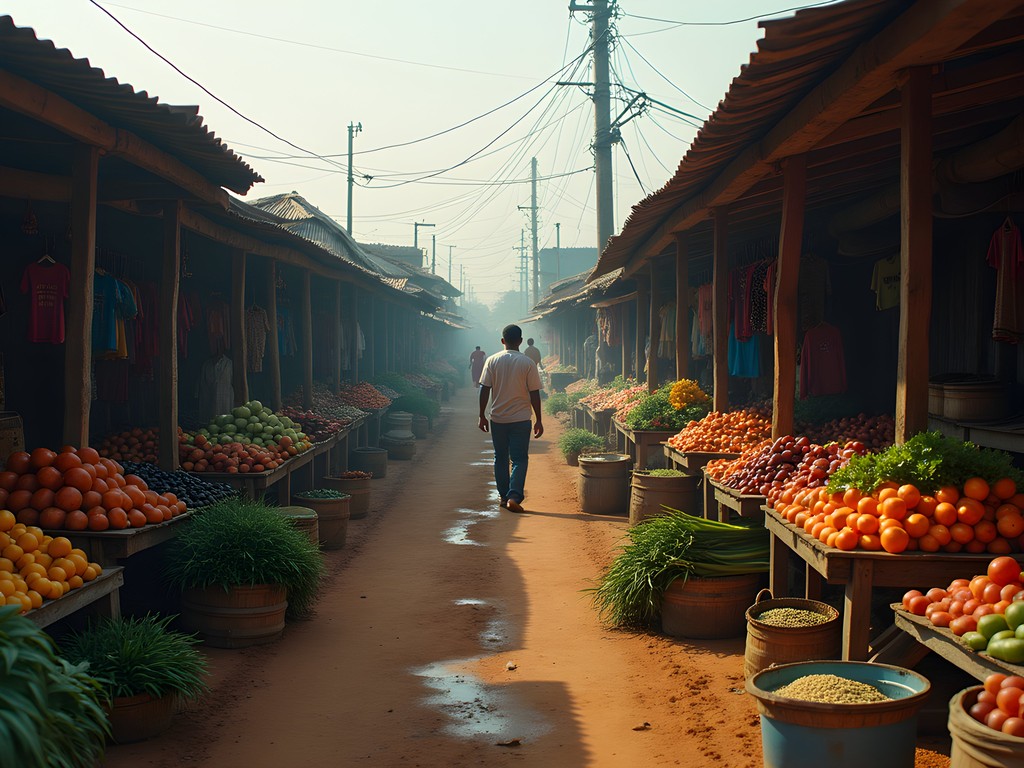
💡 Pro Tips
- Visit the Saturday market early (6-9am) for the freshest produce and authentic street food
- Stay with local families when possible—they often offer rooms for $15-25 USD per night including breakfast
- Exchange money in Paramaribo before heading to Lelydorp for better rates
Into the Green: Budget Expeditions to Central Suriname Nature Reserve
The crown jewel of Suriname's natural heritage is undoubtedly the Central Suriname Nature Reserve—a UNESCO World Heritage site encompassing nearly 1.6 million hectares of pristine tropical forest. While organized tours from Paramaribo can easily cost $500+ for a few days, I discovered more affordable options by connecting with local guides in Lelydorp and the nearby village of Brownsweg.
After befriending a Saramaccan guide named Rowan at the Lelydorp market, I arranged a 3-day expedition for just $200, including transportation, basic accommodation in a forest camp, and meals. The key is flexibility—be prepared for basic conditions and shared transportation. My water filter bottle proved invaluable, allowing me to safely drink from streams and reducing plastic waste.
The reserve houses incredible biodiversity—I spotted six species of primates, countless birds, and even a rare jaguar track along a muddy riverbank. Voltzberg, a 245-meter granite dome rising from the jungle, offers breathtaking panoramic views for those willing to make the steep hike. My quick-dry hiking pants were perfect for this environment—lightweight enough for the humidity but tough enough to withstand thorny undergrowth and quick to dry after river crossings.
During my expedition, I visited several Maroon villages where descendants of escaped slaves have maintained distinct cultural traditions for centuries. These communities operate largely outside the cash economy, so bring small gifts like fishing hooks, school supplies, or medical items rather than money if you wish to show appreciation for their hospitality.
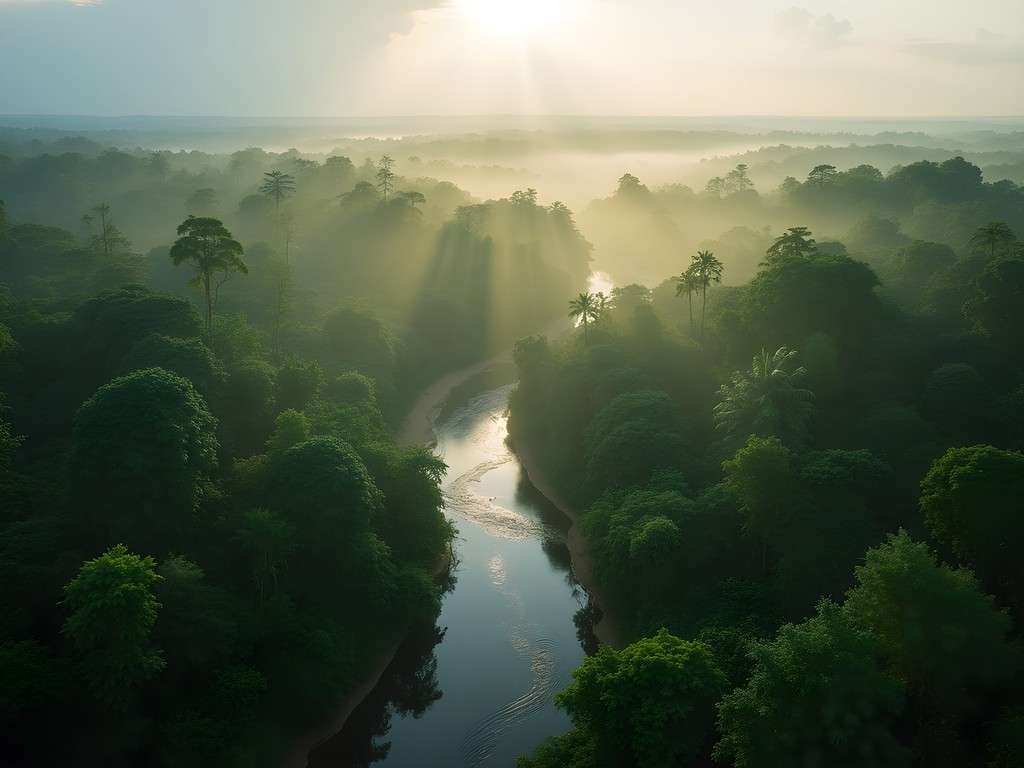
💡 Pro Tips
- Book guides locally in Lelydorp or Brownsweg rather than through Paramaribo agencies to save 50-60%
- Pack light but include a good headlamp, insect repellent, and quick-dry clothing
- Learn basic Sranan Tongo phrases to connect with local guides and communities
Cultural Immersion: Budget-Friendly Experiences in Lelydorp
Lelydorp's greatest asset for budget travelers is its authentic cultural experiences that cost little or nothing. The town serves as home to Suriname's largest Javanese community, descendants of contract laborers brought by Dutch colonists in the late 19th century. This heritage is deliciously evident in the warungs (small family restaurants) scattered throughout town, where $3-5 buys a feast of nasi goreng, bami, and saoto soup.
One afternoon, I stumbled upon the workshop of Mr. Soekardi, a master craftsman of traditional Javanese wayang kulit (shadow puppets). For several hours, he demonstrated his intricate leather cutting techniques while sharing stories of how these Indonesian traditions evolved in Surinamese soil. He didn't charge for the impromptu workshop, though I purchased a small puppet as a meaningful souvenir.
The Sanatan Dharm Mandir (Hindu temple) on the outskirts of town welcomes respectful visitors, offering a glimpse into the spiritual practices of Suriname's Hindustani community. I was fortunate to visit during a festival where volunteers served free vegetarian meals to all attendees—a practice reflecting the community's generosity.
For music lovers, Lelydorp's community center hosts weekend gatherings where you might hear anything from kaseko (Creole dance music) to kawina (traditional Maroon drumming). Bring a compact bluetooth speaker to share your own music—I found it a wonderful icebreaker when meeting locals, who were curious about Australian music and eager to exchange cultural favorites.
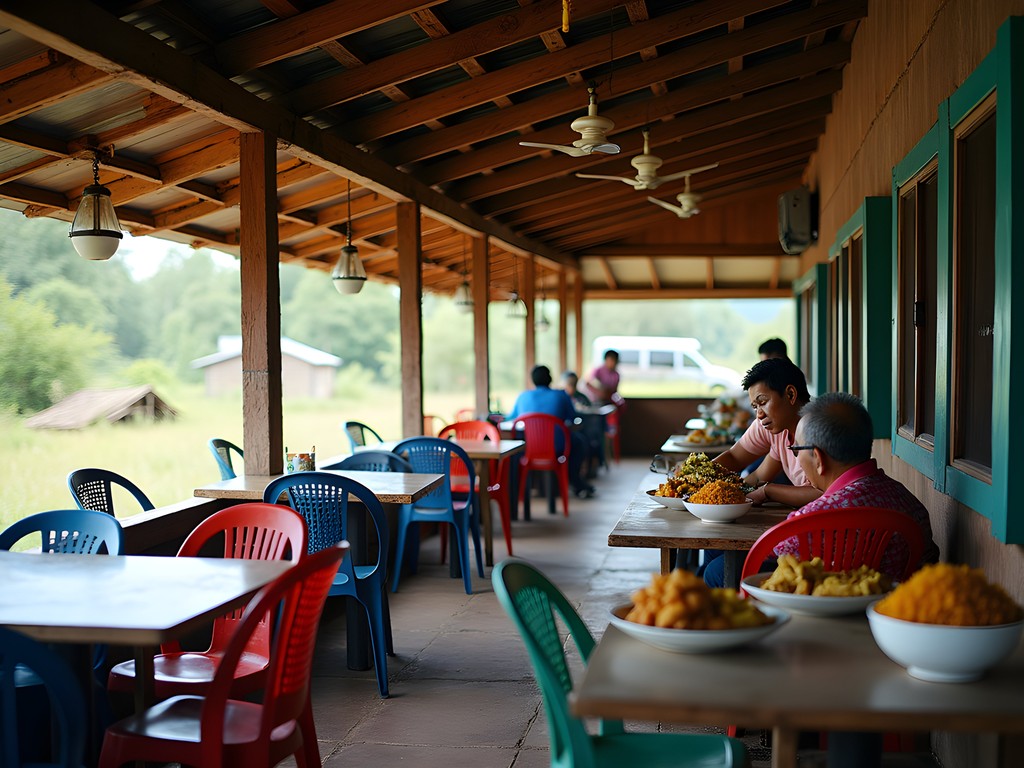
💡 Pro Tips
- Visit warungs between 2-4pm for discounted meals as locals typically eat early lunch and late dinner
- Ask permission before photographing people or religious ceremonies
- Bring small denominations for street food—vendors rarely have change for large bills
Navigating Suriname's Interior on a Budget
The greatest challenge—and adventure—of budget travel in Suriname is transportation. Public minibuses connect Lelydorp to Paramaribo for about $1.50 each way, but reaching the interior requires creativity and patience. During my week-long exploration, I relied on a combination of shared taxis, logging trucks, and dugout canoes to reach remote communities.
From Lelydorp, twice-weekly trucks head to Brownsweg (the gateway to the nature reserve) for about $8. The journey takes 3-4 hours on rough roads, but the elevated truck bed offers spectacular views and cultural insights as you pass through small villages. I never travel to remote areas without my dry bag backpack, which kept my electronics safe during unexpected downpours and river crossings.
For deeper jungle exploration, rivers become the highways. In Brownsweg, I negotiated with boatmen for passage to Maroon villages along the Upper Suriname River. A one-way journey of several hours cost around $15-20 when sharing with locals. These traditional dugout canoes equipped with outboard motors navigate challenging rapids with surprising agility.
While exploring the remote Brownsberg Nature Park, I relied on my solar charger to keep my phone and camera batteries topped up during three days without electricity. The abundant Surinamese sunshine made this an effective solution for staying connected even in the wilderness.
One word of caution: interior transportation rarely follows fixed schedules. The concept of time in rural Suriname is fluid—departures happen when vehicles are full rather than at set times. Budget extra days for unexpected delays and embrace them as opportunities for deeper cultural immersion rather than frustrations.
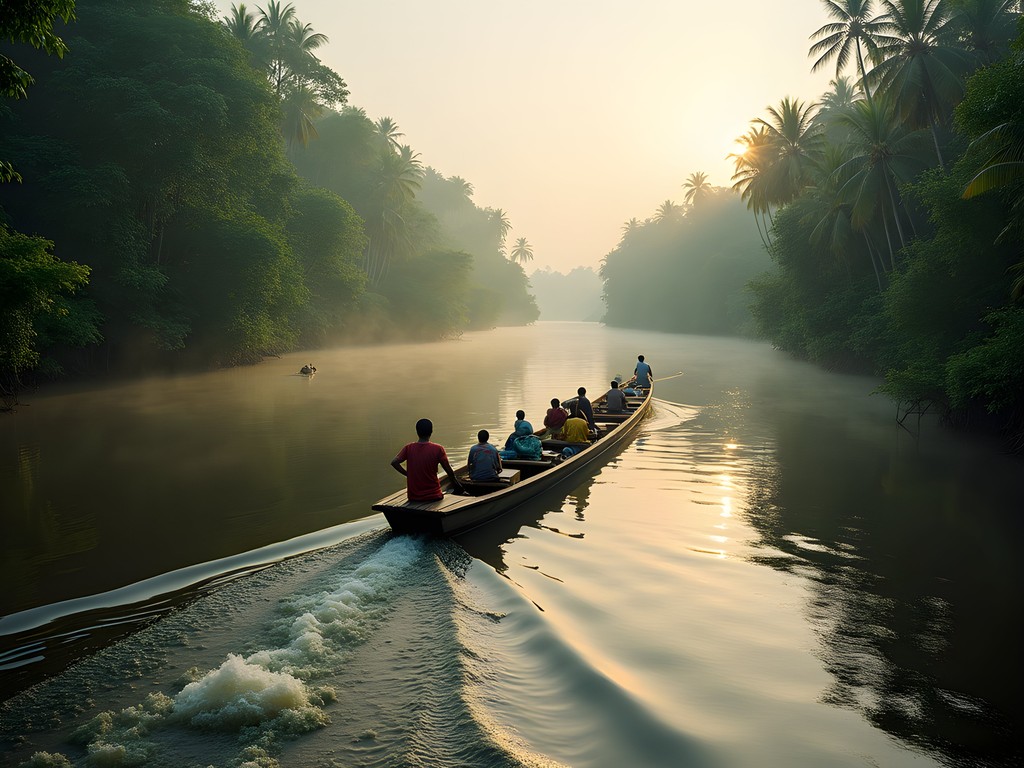
💡 Pro Tips
- Always carry extra water and snacks for transport delays
- Negotiate transport prices before departing, but expect to pay a fair rate—extreme bargaining isn't culturally appropriate here
- Make friends with locals heading in your direction—shared charter boats and vehicles can significantly reduce costs
Practical Survival Guide: Budget Tips for Suriname's Challenges
Suriname presents unique challenges for budget travelers that require advance preparation. The country operates largely on cash, with ATMs scarce outside Paramaribo. Before heading to Lelydorp, I withdrew enough Surinamese dollars for my entire stay, keeping them secure in a money belt worn under my clothes.
Mosquitoes and other insects are relentless, particularly during the rainy season. Rather than constantly reapplying chemical repellents, I relied on a permethrin spray to treat my clothing before arrival. This odorless treatment remains effective through multiple washings and provided excellent protection in the jungle.
Communication can be challenging—mobile coverage exists in Lelydorp but disappears quickly as you venture into the interior. I purchased a local Digicel SIM card in Paramaribo ($5 with basic data) for use in town and to coordinate with guides. For emergency communication in remote areas, my satellite messenger provided peace of mind, allowing text messaging and SOS capabilities anywhere with clear sky visibility.
Food safety deserves serious attention. Street food in Lelydorp is generally safe and incredibly affordable (complete meals for $2-4), but I was selective about meat dishes in extreme heat. Fresh tropical fruits like mango, papaya, and soursop offered safe, nutritious alternatives when properly washed or peeled.
Finally, respect for local customs goes a long way. Suriname's diverse communities each have distinct cultural practices. In Maroon villages, women should wear skirts covering the knees, while in Javanese areas, removing shoes before entering homes is expected. These small gestures of respect often resulted in invitations to community events not accessible to typical tourists.
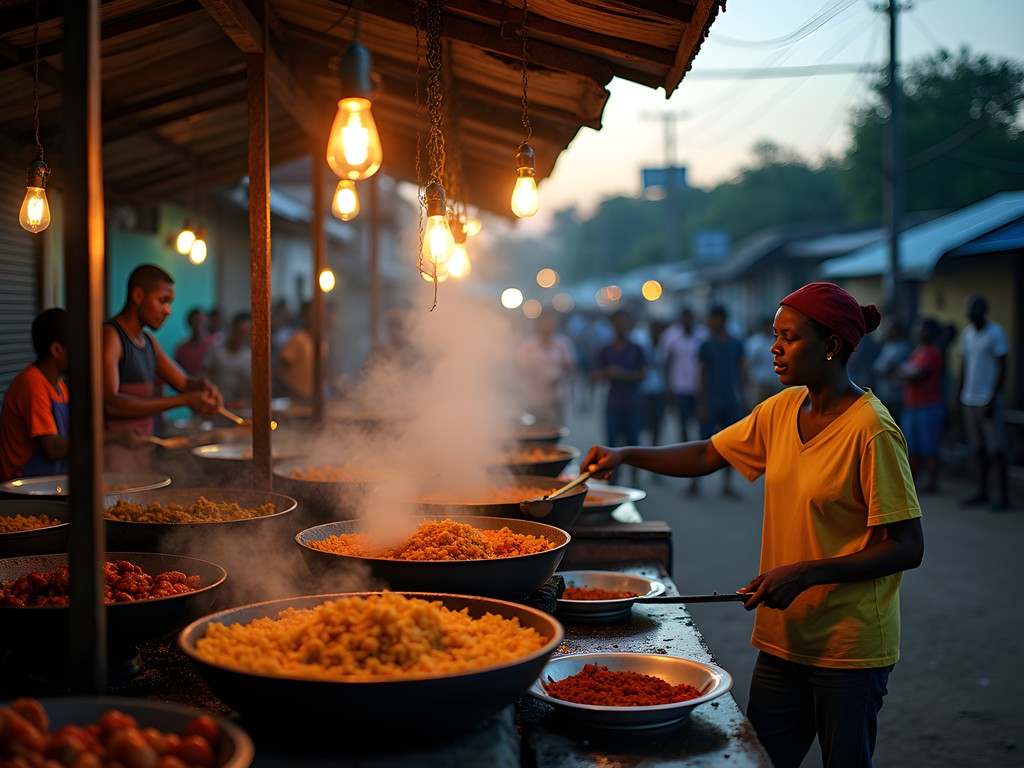
💡 Pro Tips
- Carry a basic medical kit including broad-spectrum antibiotics (with prescription), anti-diarrheals, and antihistamines
- Learn the Dutch or Sranan Tongo words for common allergies or dietary restrictions
- Register your travel plans with your country's embassy in Paramaribo before heading into remote areas
Final Thoughts
As I boarded my departing flight from Paramaribo, my boots still caked with mud from the rainforest, I couldn't help but reflect on how Suriname defies easy categorization. This small country—roughly the size of my home state of New South Wales—contains multitudes: pristine wilderness, living archaeological sites of Maroon heritage, and a cultural diversity that rivals nations many times its size. All this remains accessible to budget travelers willing to embrace its challenges.
Lelydorp served as my perfect base—affordable, authentic, and positioned at the crossroads between urban Suriname and its wild interior. For less than $400 (excluding flights), I experienced a week of adventures that would cost thousands in more established destinations. The connections I made with local guides, families, and fellow travelers proved more valuable than any luxury accommodation could offer.
Suriname won't remain off the beaten path forever. The growing interest in authentic ecotourism and cultural experiences will inevitably bring more visitors to its shores. If you're drawn to places where adventure still feels genuine and unpackaged, now is the time to explore this remarkable corner of South America. Pack light, bring an open mind, and prepare for Suriname to challenge your preconceptions about travel, culture, and perhaps even yourself.
✨ Key Takeaways
- Lelydorp offers an affordable, authentic base for exploring both Suriname's cultural diversity and its pristine rainforests
- Local connections are the key to budget-friendly adventures—seek out guides and transportation in smaller communities rather than the capital
- Flexibility and patience are essential virtues when traveling in Suriname's interior, where schedules are fluid and infrastructure basic
- A complete week of adventure in Suriname can cost under $400 (excluding international flights) for budget-conscious travelers
📋 Practical Information
Best Time to Visit
August-November (minor dry season) or February-April (major dry season)
Budget Estimate
$40-60 per day including accommodation, food, and local transportation
Recommended Duration
Minimum 7 days, ideally 10-14 days
Difficulty Level
Challenging

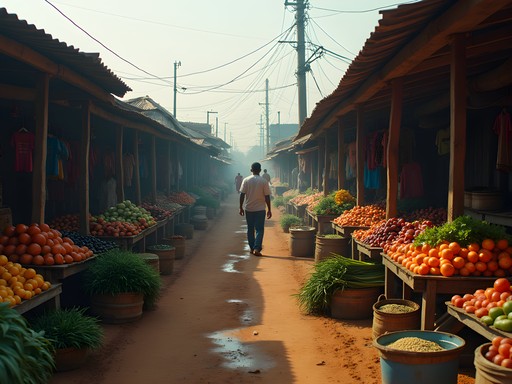
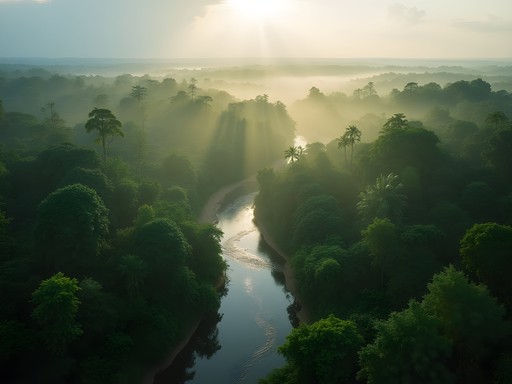

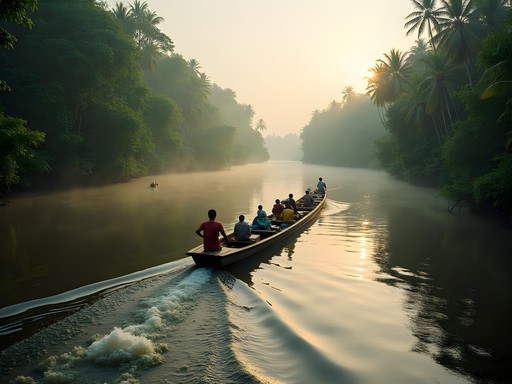
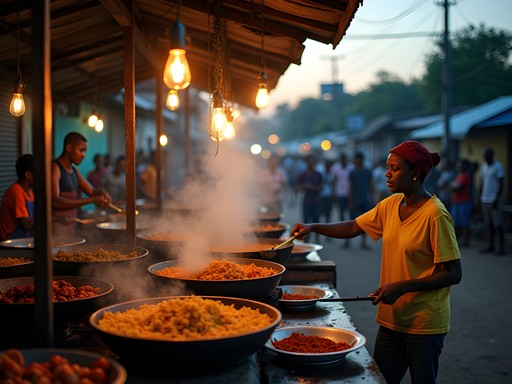



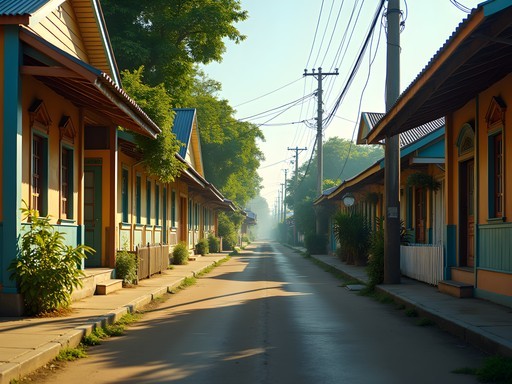


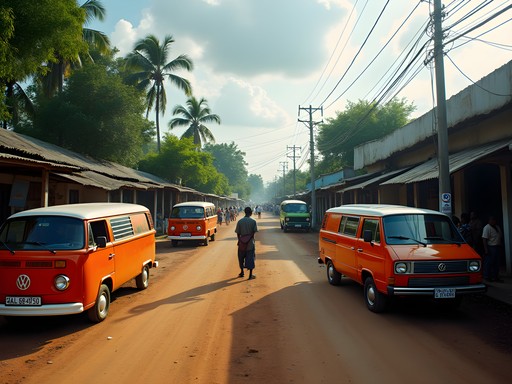
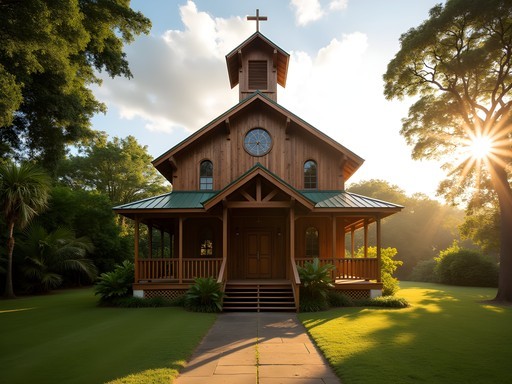
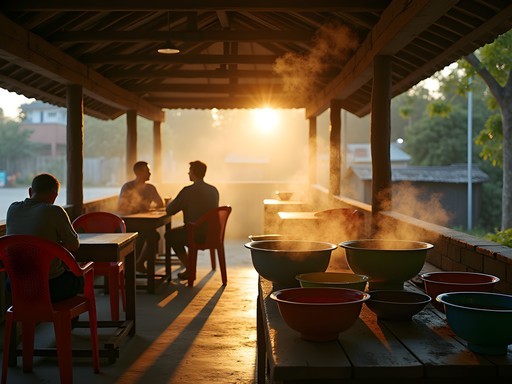
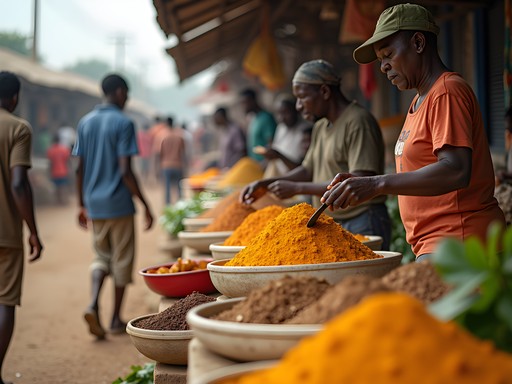
Comments
Hunter Thompson
Erik, your budget transportation tips saved me so much cash! The local minibuses from Paramaribo to Lelydorp were exactly as you described - chaotic but efficient. I paid just 5 SRD (like $0.15 USD) compared to the $25 taxi quotes! For anyone heading that way, bring small bills and don't be shy about asking locals where to stand - there's no official 'bus stop' sign. The driver's assistant will literally hang out the window shouting destinations. Just wave them down! One tip to add: download the offline map of Central Suriname before going. Cell service disappears completely about 30 minutes outside Lelydorp. The community-run guesthouse near Brownsweg was a steal at $15/night and the family cooked amazing meals.
wildvibes
Going to Suriname in October - how did you handle the humidity in the rainforest? Any tips for keeping electronics dry?
Erik Murphy
The humidity is no joke! I kept my electronics in double ziplock bags when not using them and brought silica gel packets. My dry bag was a lifesaver during sudden downpours. Also, quick-dry clothing is essential - cotton stays wet forever there!
wildvibes
Thanks! Already got some quick-dry stuff but will definitely grab a good dry bag. Did you find it easy to recharge stuff in Lelydorp?
Erik Murphy
Most guesthouses in Lelydorp have reliable electricity. It's when you head into Central Suriname that it gets tricky. I'd recommend bringing a power bank for the rainforest trips!
sunsetmate
Just got back from Suriname last month and Lelydorp was such a hidden gem! We almost skipped it but your blog post convinced us to spend 3 days there. That cultural crossroads feel is so real - had the best roti of my life from a tiny roadside stand run by an Indo-Surinamese family. Did you try the cassava bread from the Maroon cultural center? That demonstration was incredible, and they let us help pound the cassava!
Hunter Thompson
The cassava bread demo is amazing! Did you get to try making it yourself? My hands were sore for days after trying to pound it properly haha
sunsetmate
Yes! My technique was terrible but the ladies there were so patient. My arms were DEAD afterward - no idea how they do that every day!
luckyvibes
This looks incredible! How's the internet connection in Lelydorp? Need to do some remote work while traveling.
Bryce Diaz
It's surprisingly decent in Lelydorp - I was able to upload photos and do video calls from most guesthouses. Once you head into the nature reserve though, forget about it! I'd recommend getting a local SIM card at the airport when you arrive.
BackpackBetty
Going there next month! How's the internet connection in Lelydorp? Need to check in with work occasionally.
Erik Murphy
It's decent in Lelydorp - most guesthouses and cafes have WiFi. Just don't expect much once you head into the Nature Reserve!
moonchamp
I was just there and had no issues in town. I got a local SIM at the airport which worked great in Lelydorp as backup!
luckyexplorer
Just followed your itinerary last week and it was amazing! The bus system from Paramaribo to Lelydorp was super easy once we figured out where to catch them. We stayed at that guesthouse you mentioned near the market - still only $25/night and the owner Johan was so helpful. He even took us to meet his family in a nearby village. One thing to add - we found an amazing local guide named Ronnie who took us on a day trip to spot sloths and monkeys for way less than the tours advertised online. If anyone's going, bring lots of small USD bills. Many places in smaller towns had trouble making change for larger bills.
SurinameExplorer
Love this! Finally someone writing about Lelydorp instead of just Paramaribo!
moonchamp
Just got back from Suriname and used this guide like a BIBLE! Lelydorp was exactly as you described - that cultural fusion is UNREAL. We did the public transportation thing too and it was such a vibe. Those minibuses are chaotic but so fun! We stayed at that guesthouse you mentioned with the garden and the owner made us homemade cassava pancakes every morning. The Nature Reserve was mind-blowing but bring a good headlamp if you're doing night hikes - my cheapo one died halfway through and I had to stick with the guide like glue! My waterproof daypack was a lifesaver during those sudden downpours. Thanks for putting Suriname on my radar, Erik!
TropicalTraveler83
How safe did you find Lelydorp for solo travelers? Planning a trip there in January!
Erik Murphy
I found it very safe! The locals are incredibly friendly and helpful. Just use common sense precautions like you would anywhere - don't flash valuables and be aware of your surroundings after dark. The guesthouses in Lelydorp are quite secure and most hosts look out for solo travelers.
Stephanie Romano
Erik, this brings back such memories! I visited Lelydorp with my kids last year and it was such an unexpected highlight of our Suriname trip. The cultural mix there is incredible - my children still talk about that little bakery where we had the most amazing cassava bread. We also did the budget expedition to the Nature Reserve and I'd add one tip: bring twice as many socks as you think you'll need! The humidity means nothing ever fully dries. Did you get a chance to visit any of the Maroon villages further inland? That was the most impactful cultural experience for my family.
moonchamp
Stephanie - was the Nature Reserve doable with kids? Planning to take my 10 and 12 year olds next spring break!
Stephanie Romano
@moonchamp Absolutely! Mine were 9 and 11 at the time. Just book a guide who's used to families (we used Ronald from Lelydorp Tours) and bring plenty of snacks and a good mosquito repellent. My kids actually handled the humidity better than I did!
moonchamp
Thanks so much! Adding Ronald to my contacts list. Any specific trails you'd recommend for that age group?
Venture X
Premium card with 2X miles, $300 travel credit, Priority Pass